Inside a Century of Spectacle and Speed
A salute to some of the world’s most iconic supercars.
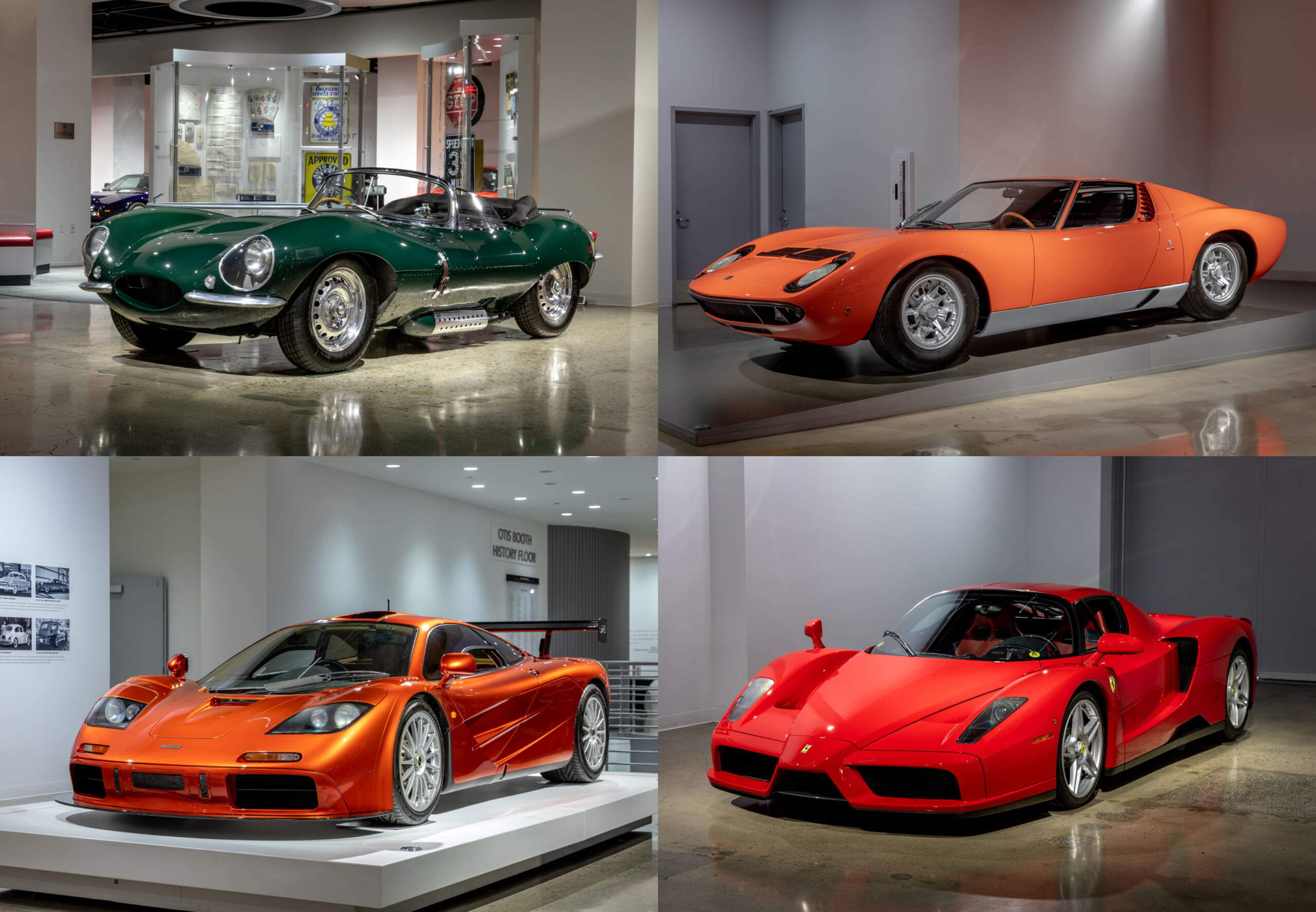
LA’s Petersen Automotive Museum is the gearhead’s Louvre, having previously showcased beloved vehicles from the silver screen and Metallica frontman James Hetfield’s crazy hot rod collection.
Now the high-octane institution is taking a comprehensive look at 100 years of the industry’s highest-performance, most coveted and best-looking rides in “Supercars: A Century of Spectacle and Speed.”
With over 30 models spanning the 1910s-2000s, the flagship exhibit offers detailed glimpses at some of the first roadgoing race cars like the 1913 Mercer Type 35-J and 1924 Mercedes 28/95 Targa Florio.
Farther down the road are better known classics like the 1955 Mercedes 300 SL Gullwing, the 1956 Jaguar XKSS and the 1968 Lamborghini Miura—the first model to be widely referred to as a “supercar.”
More recent, instantly legendary automobiles like the 1998 McLaren F1 LM, 2004 Ferrari Enzo, and 2006 Ford GT take viewers right up to the brink of the supercar’s next evolution, the hypercar.
The coronavirus pandemic has forced Petersen to keep its doors closed (you can help them out by entering to win a mint-condition Ford GT). Supercars: A Century of Spectacle and Speed, which is currently scheduled to run through May 9 2021, will serve as a celebration upon an imminent (but yet-to-be announced) reopening. With descriptions and specs from the museum, see 8 of our favorite supercar selections below:
1955 Mercedes 300SL Gullwing
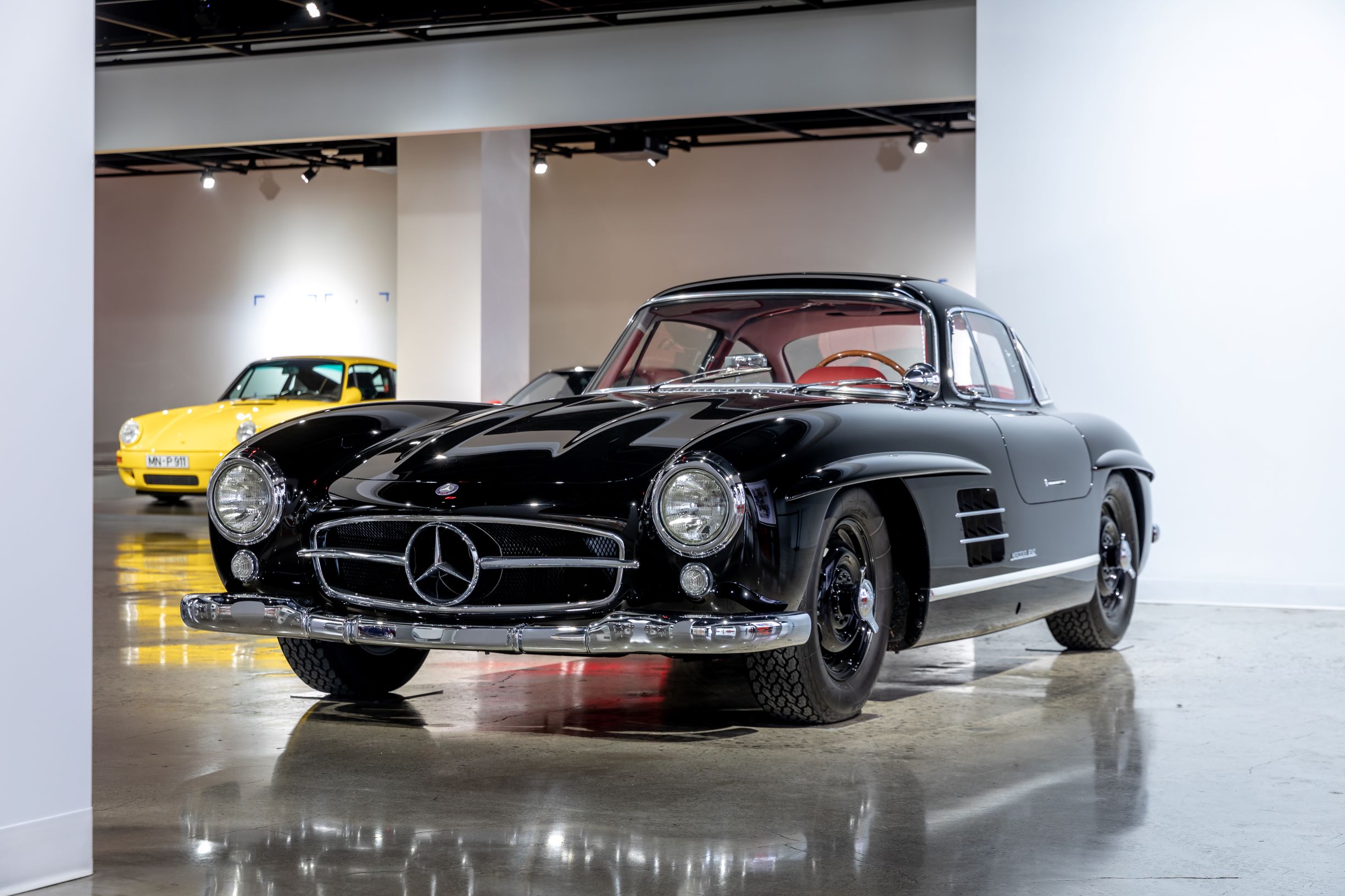
Originally designed for road racing, the 300SL was the world’s first production car with fuel injection. The lightweight construction of the SL, or “super leicht” (super light) was achieved by a rigid tube frame substructure and allowed for much higher speeds than mainstream cars with body-on-chassis construction. Although the structural lattice work provided great strength, each side was so high that the car had to be equipped with roof-hinged doors which, when opened, resembled the wings of a bird in flight, hence the unofficial nickname “Gullwing.” The “SL” designation is
still used today in the model names of Mercedes-Benz’s sportiest cars.
- Top Speed: 155 mph
- Horsepower: 215
- No. Built: 867 (1955 model year)
- Engine: 3.0-liter inline-six
1956 Jaguar XKSS
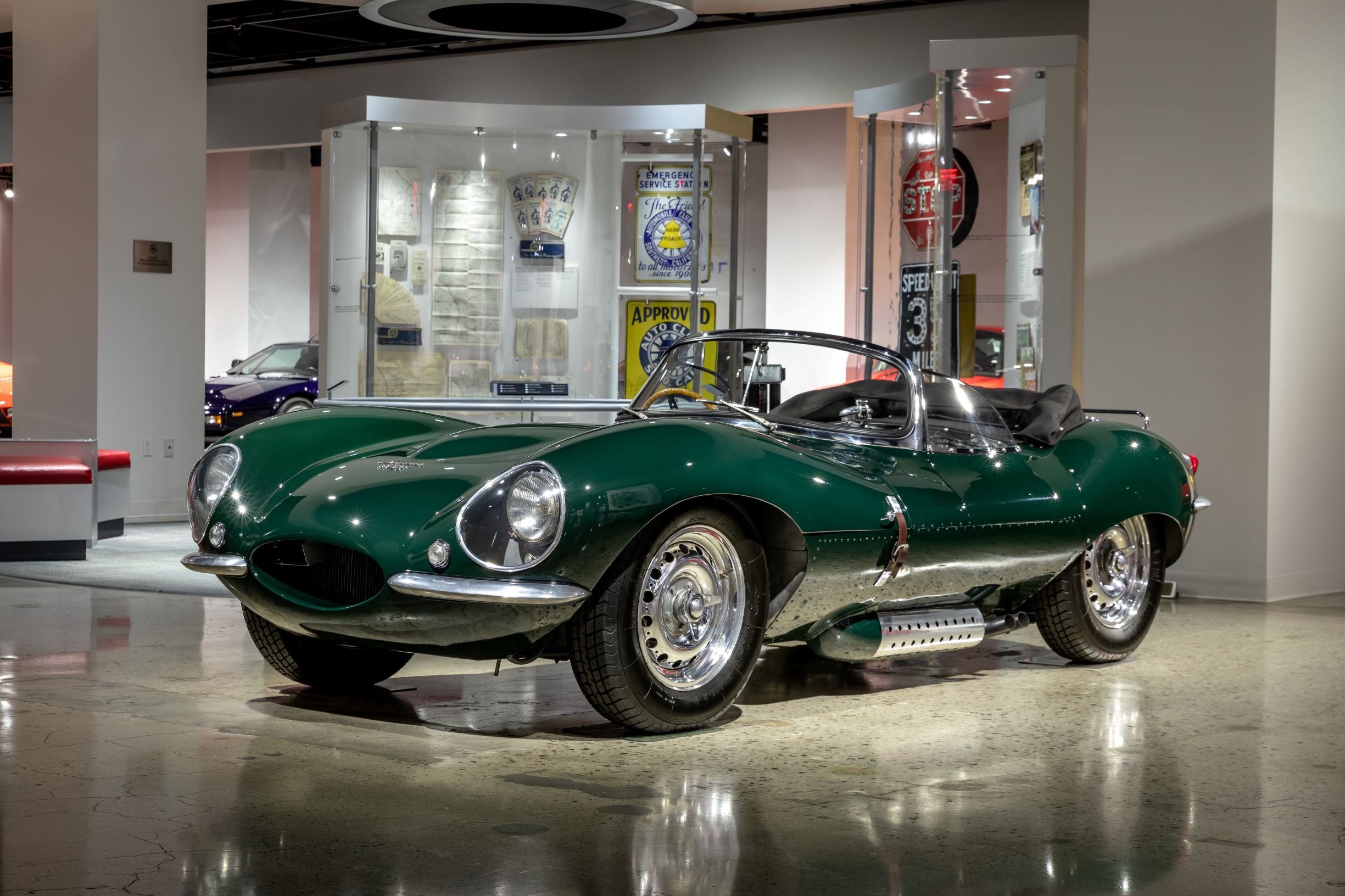
As imposing as it is voluptuous, the XKSS was a road-going version of Jaguar’s Type D race car. Designed using aeronautical technology that included a revolutionary monocoque construction, D-Type race cars had seen great success at the 24 Hours of Le Mans, winning the race in 1955, 1956, and again in 1957 with an impressive 1-2-3-4-6 sweep. Following Jaguar’s withdrawal from competition at the end of the 1956 season, Sir William Lyons decided to convert the unused D-Type race cars into menacing road cars to sell on the American market. However, after a fire broke out at the Browns Lane plant in 1957, only 16 of the intended 25 cars were completed.
- Top Speed: 150 mph
- Horsepower: 250
- No. Built: 16
- Engine: 3.4-liter inline-six
1967 AC/Shelby Cobra 427
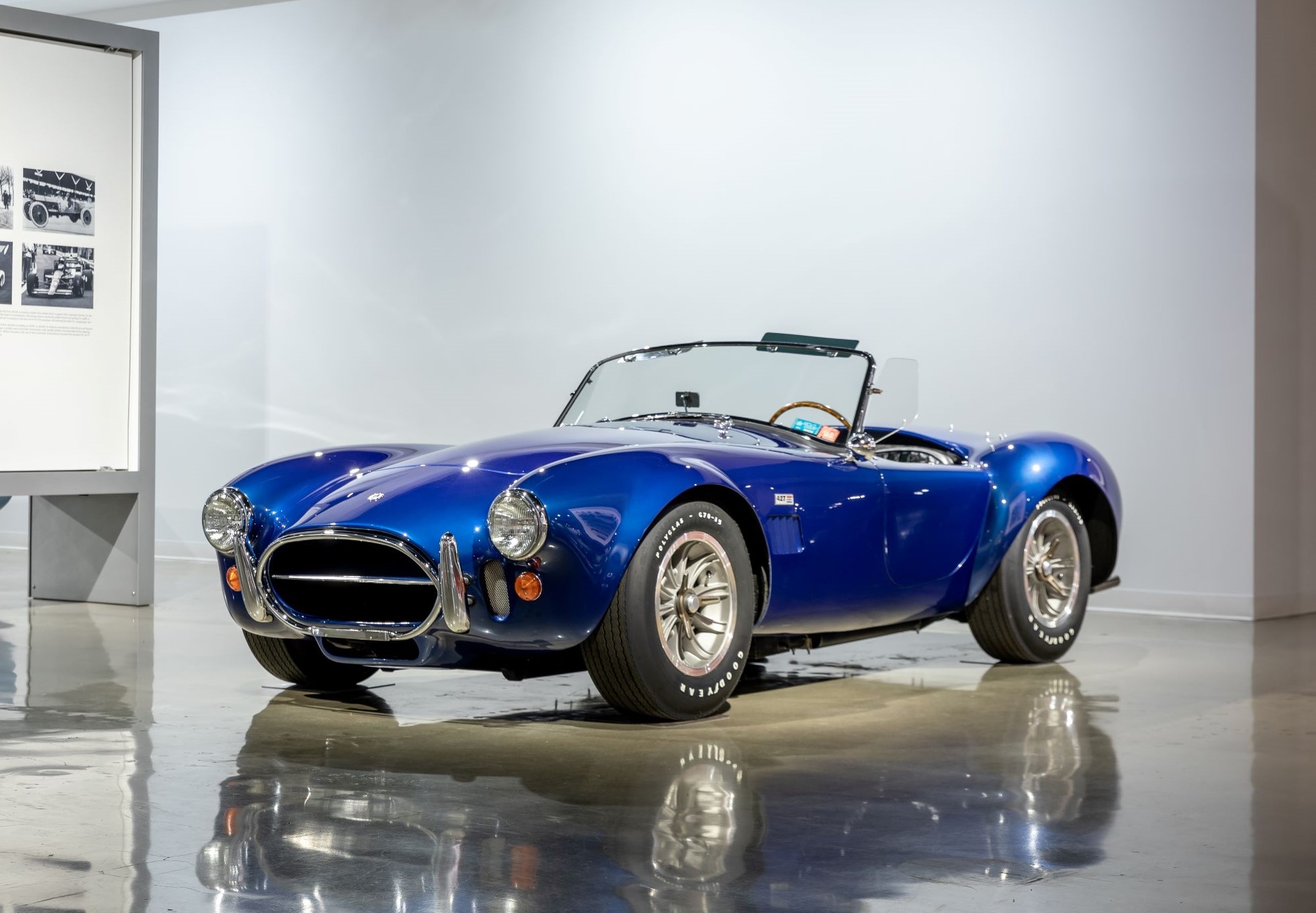
Introduced in 1962, the AC Shelby Cobra was a British-American sports car constructed by legendary driver Carroll Shelby. By installing American Ford V-8 engines into British AC Ace roadsters, Shelby created what would become the fastest American automobiles of their time. The most potent version of the Cobra was powered by a thundering 427-cubic inch engine that was so large it required that the body be both lengthened and widened to fit. “Competition” and “Semi-Competition” packages with handling and mechanical upgrades were available to buyers who planned to race their vehicles.
- Top Speed: 160 mph
- Horsepower: 360
- No. Built: 260
- Engine: 7.0-liter V8
1968 Lamborghini Miura P400
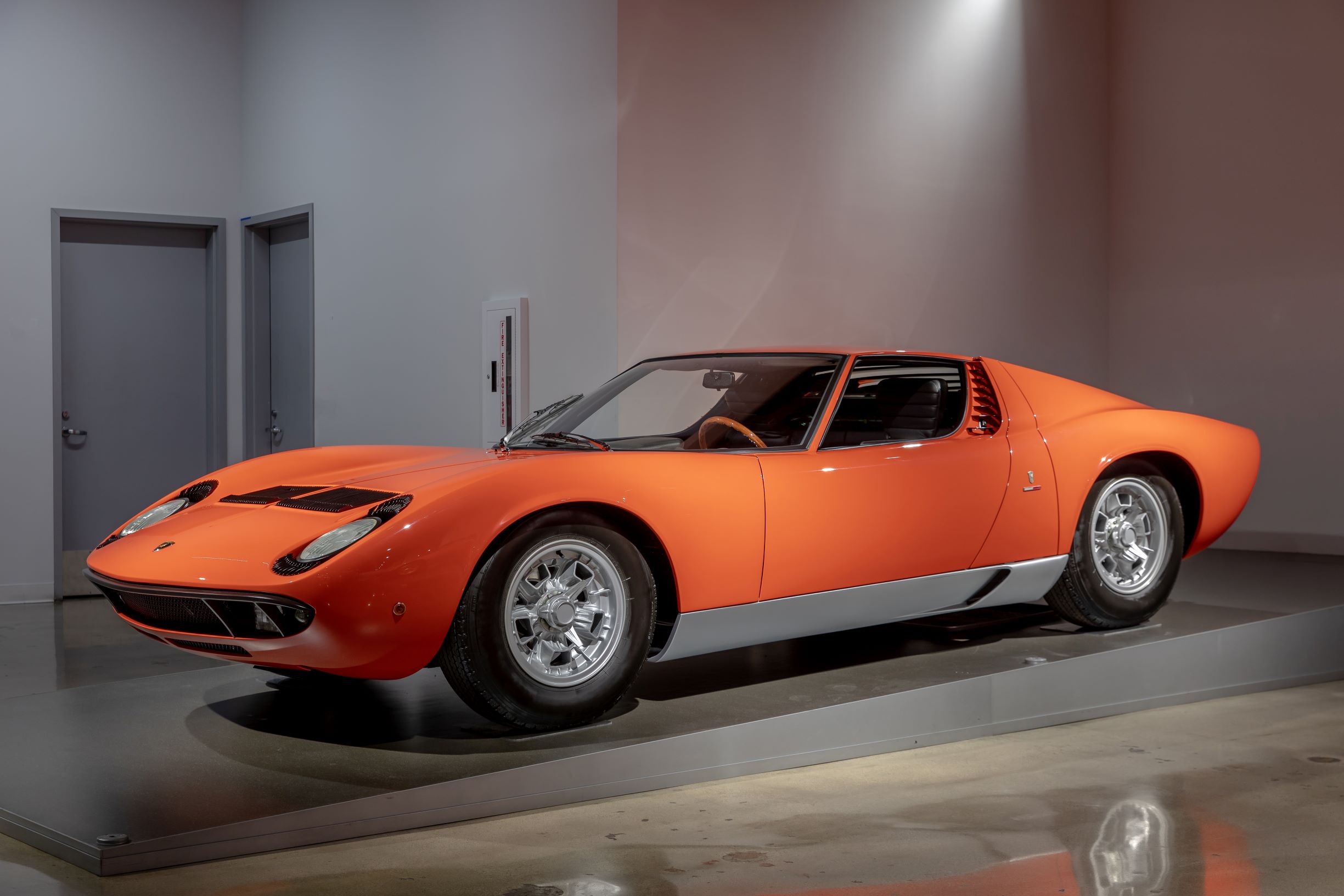
Lamborghini introduced the Miura in 1966, seizing the opportunity to become the first automobile manufacturer to offer a civilized mid-engine automobile worthy of supercar status. Likely inspired by the Ferrari 250LM, Ford GT40, and other successful mid-engine race cars, the Miura had one of the lowest profiles of any production car built up to that time. The ultra-sleek coupe designed by Marcello Gandini for Bertone helped redefine the look of supercars as other manufacturers emulated Lamborghini’s mid-engine layout and aggressive design.
- Top Speed: 174 mph
- Horsepower: 345
- No. Built: 475
- Engine: 3.9-liter V12
1981 BM M1
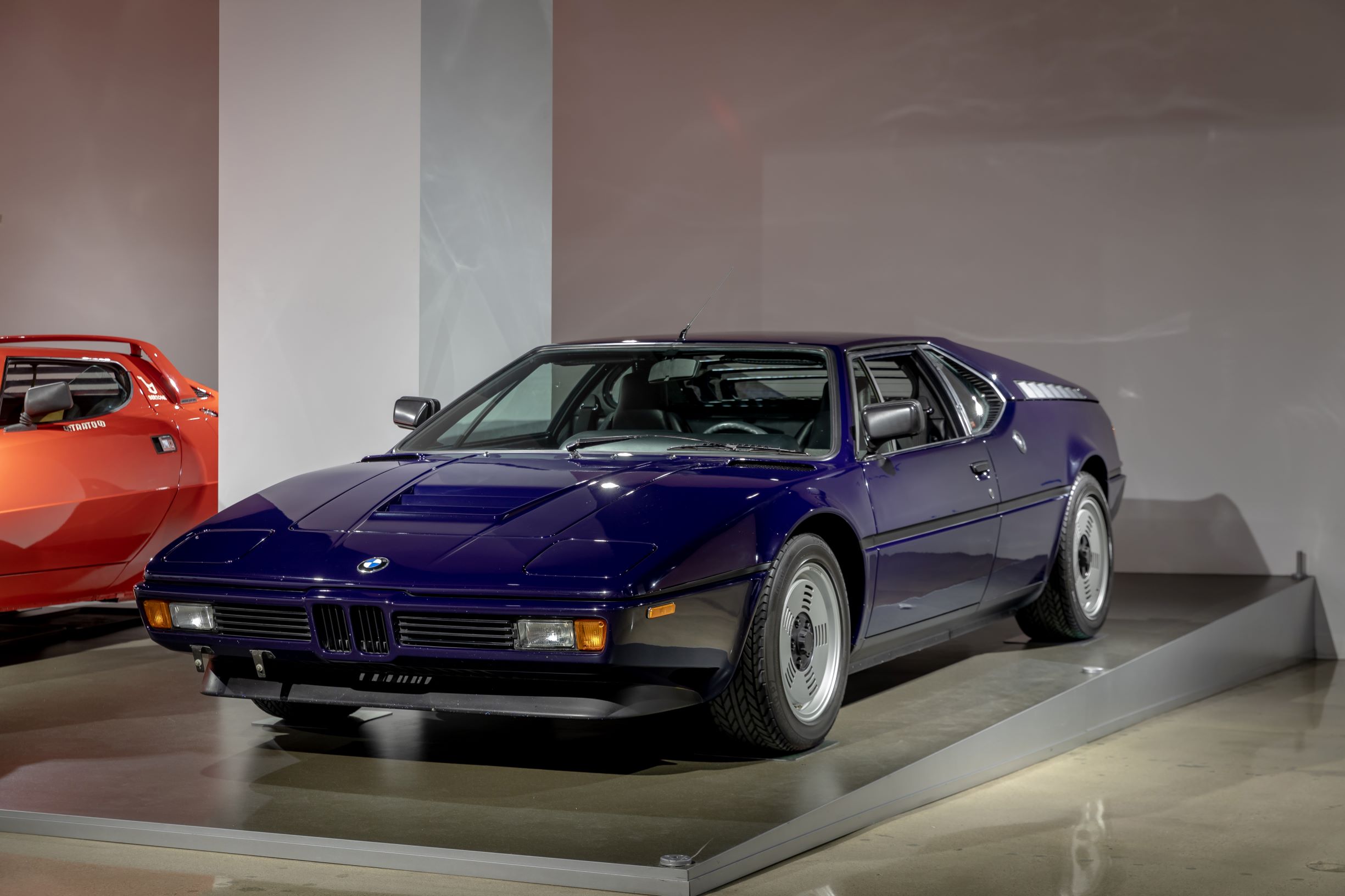
Introduced at the Paris Motor Show in 1978, the Giugiaro-designed M1 was BMW’s first mid-engine production car. It was powered by a twin-cam, fuel- injected 3.5-liter straight six-cylinder engine. Acceleration from 0-60 miles per hour took a mere 5.4 seconds. Conceived with racing in mind, the M1 was equipped with an elaborate suspension that included double wishbones on each wheel, gas-pressure dampers, and anti-roll bars. It was hailed by magazines of the day as the world’s first supercar that was as civilized to ride in as it was formidable to race.
- Top Speed: 162 mph
- Horsepower: 277
- No. Built: 400 (estimated)
- Engine: 3.5-liter inline-six
1988 Lamborghini Countach 5000QV
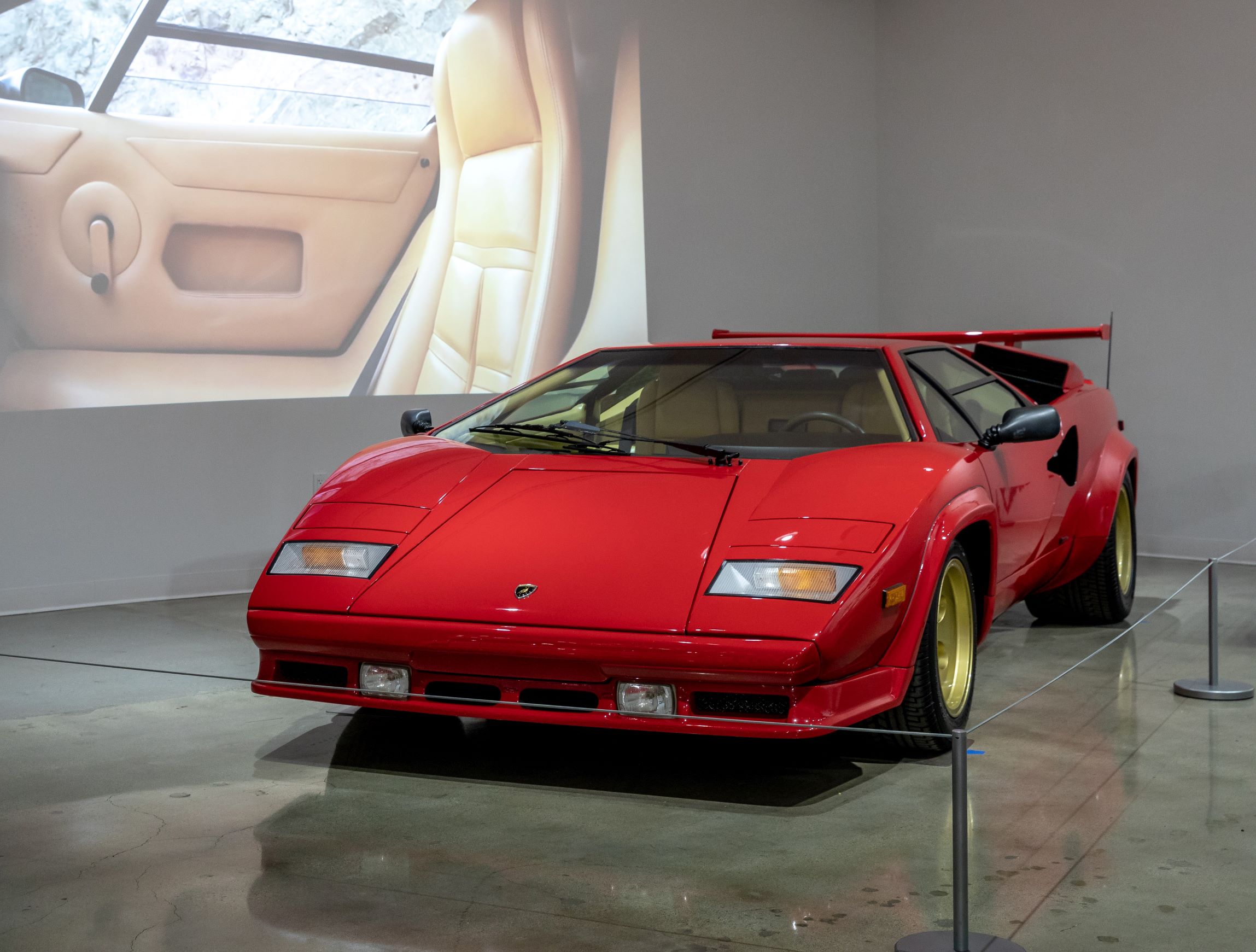
Just ten years after Italian tractor manufacturer Ferruccio Lamborghini began producing his own cars, the debut of the wildly dramatic mid- engine Countach established his firm as the foremost producer of exotic automobiles. With its ultra-modern body designed to have a pronounced cab forward, wedge shape, the Countach signaled a departure from typical supercar design, raising the bar for every supercar manufacturer that followed. The third major revision, the 1985 Quattrovalvole or QV, was named
for its expensive, but efficient, twin cam, four-valve head.
- Top Speed: 186 mph
- Horsepower: 420
- No. Built: 610 (all years)
- Engine: 5.2-liter V12
1998 McLaren F1 LM
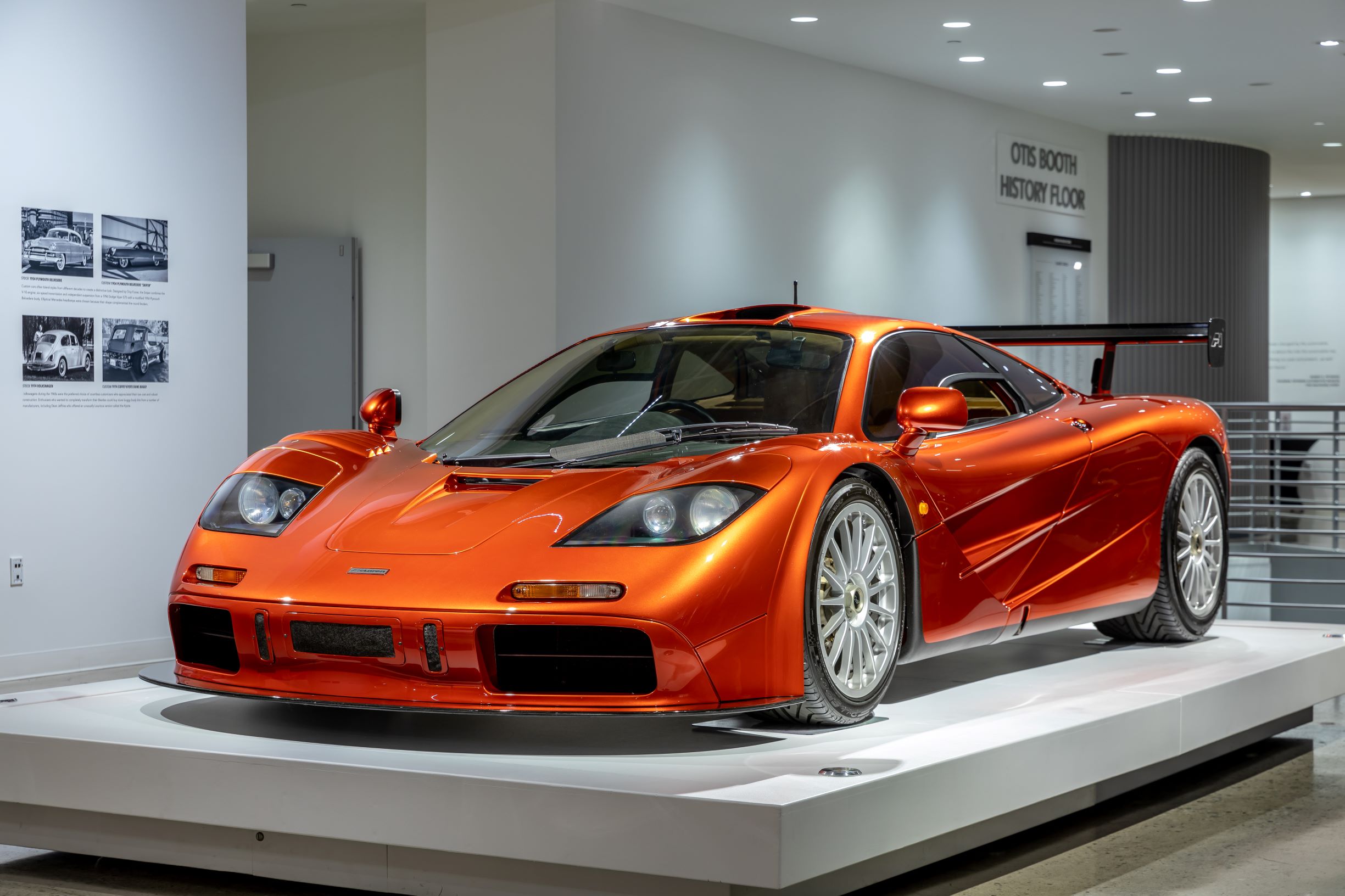
Built by Formula 1 car designer Gordon Murray to be the ultimate street legal GT car, the McLaren F1 came to serve as the archetype of a new performance
vehicle now known as the hypercar. With its combination of high performance, aggressive styling, low production volume, and use of expensive and
high-performance materials like gold, titanium, Kevlar, and carbon fiber, the F1 set a new standard for supercar performance. This car was one of two standard F1s fitted by McLaren with an “LM spec” engine and bodywork
modifications, increasing its power and enhancing stability at the astoundingly high speeds of which it was capable.
- Top Speed: 255 mph
- Horsepower: 680
- No. Built: 2 (LM Spec F1s)
- Engine: 6.1-liter V12
2004 Ferrari Enzo
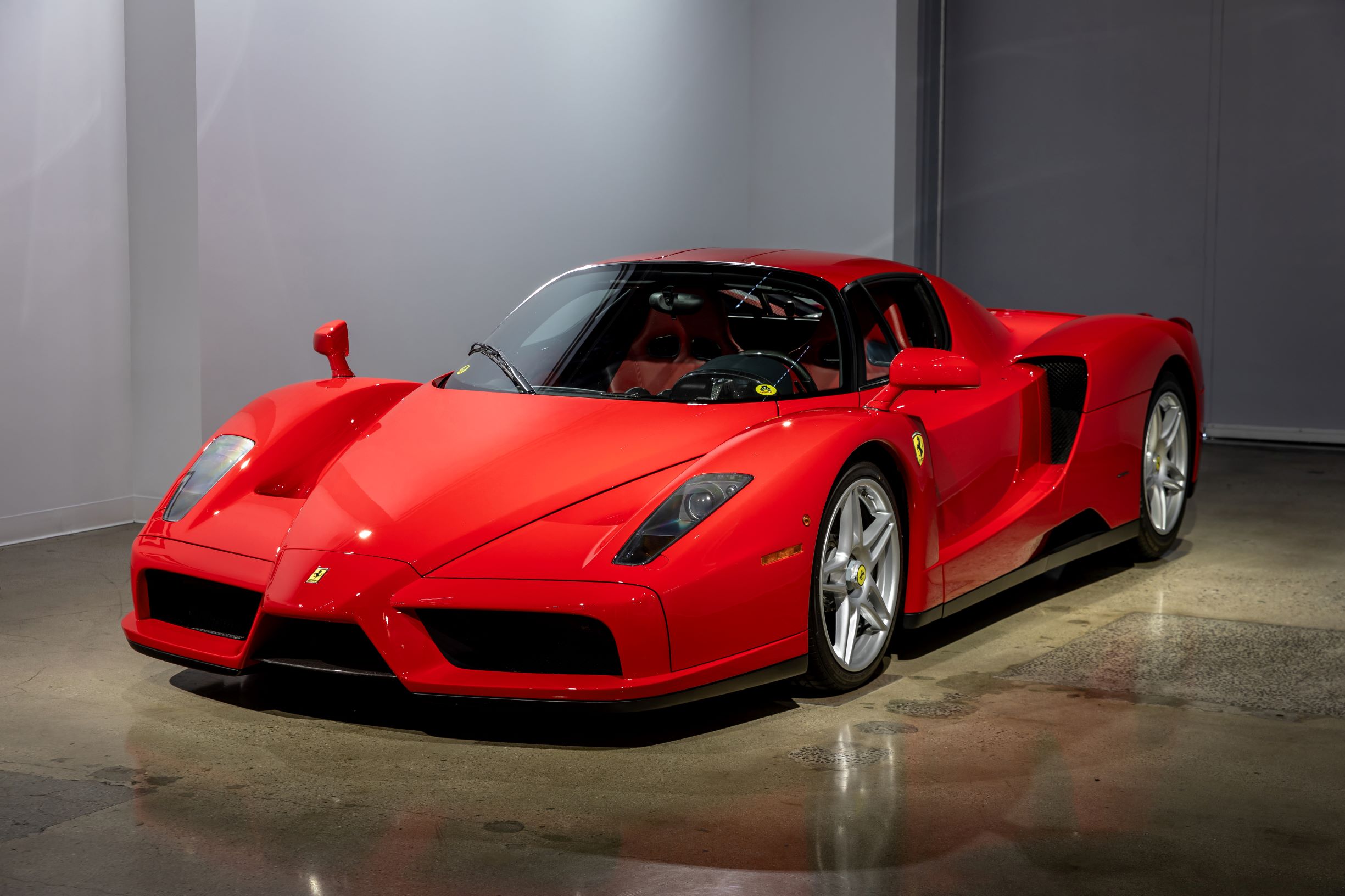
The Enzo was designed to succeed the top performing F40 and F50, the former being the last car produced under the personal auspices of Enzo Ferrari. The Enzo debuted a unique exterior by Ken Okuyama, a graduate of ArtCenter College of Design, which was inspired by the latest aerodynamics developed in competition. A road vehicle with a strong racing heritage, the Enzo has a paddle-shift transmission typical of Ferrari’s Formula 1 cars and a sparse carbon fiber interior along with amenities like air conditioning and an LED RPM indicator on the steering wheel.
- Top Speed: 218 mph
- Horsepower: 660
- No. Built: 400 (all years)
- Engine: 6.0-liter V12
